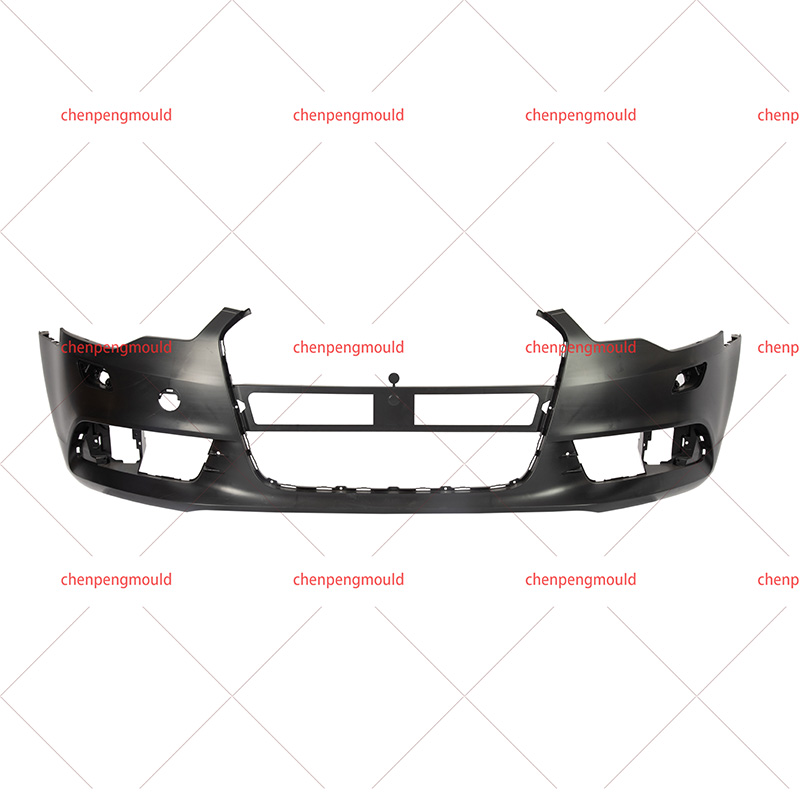In the rapidly evolving automotive industry, innovations in design and manufacturing processes continue to shape the development of key components. A notable example is the Plastic Injection Fog Lamp Frame Mould, a crucial element in the production of automotive fog lamp frames.
The Plastic Injection Fog Lamp Frame serves several essential functions. Firstly, it enhances visibility during adverse weather conditions such as fog, rain, and snow, contributing to safer driving. Additionally, these frames play a significant role in the aesthetic integration of vehicles, with designers incorporating innovative shapes and patterns to enhance visual appeal. Structurally, the fog lamp frame provides support and protection to the fog lamp, ensuring its longevity and durability. Furthermore, it facilitates effective heat dissipation, preventing overheating and maintaining consistent performance.
The manufacturing process of the Car Plastic Injection Parts Mould involves several key stages. Design and prototyping kickstart the process, utilizing advanced design software for precision. Material selection is critical, with high-quality materials chosen for durability and heat resistance. The subsequent mold fabrication, involving precision machining using CNC machines, ensures the accuracy of the mold components. The heart of the process is the injection molding stage, where molten plastic material is shaped by the Car Plastic Injection Parts Mould. Efficient cooling and ejection systems optimize cycle times and guarantee consistent quality.
Technological advancements in Plastic Injection Fog Lamp Frame Moulds contribute to improved efficiency and quality. Multi-cavity molds enable simultaneous production of multiple frames, enhancing efficiency and reducing cycle times. Ongoing research focuses on innovative materials, such as high-performance polymers and composites, to enhance durability and heat resistance. Surface finish enhancements, through mold surface treatments and coatings, aim to create smooth and flawless frames, reducing the need for additional finishing processes.
Challenges in manufacturing Plastic Injection Fog Lamp Frame Moulds include the complexity of frame geometries and the need for tight tolerances. Innovative CAD/CAM technologies and precise machining address these complexities, ensuring the production of intricate components with strict dimensional specifications. Sustainability considerations are addressed through the incorporation of eco-friendly materials and energy-efficient manufacturing practices, contributing to sustainable goals.
The future of Car Plastic Injection Parts Mould technology involves the integration of smart manufacturing technologies. Sensors, IoT, and real-time monitoring systems enhance efficiency, quality control, and predictive maintenance, fostering a more connected and automated manufacturing environment. Additionally, future trends may see a focus on customization and personalization, with Car Plastic Injection Parts Moulds designed to accommodate unique designs, patterns, and finishes, offering greater design flexibility.
Looking ahead, the automotive industry is poised for further breakthroughs in Plastic Injection Fog Lamp Frame Mould technology. Advances in 3D printing and additive manufacturing may revolutionize the mold fabrication process, allowing for rapid prototyping and the creation of intricate geometries with unprecedented ease.
In response to the growing demand for sustainable practices, future innovations may focus on the development of biodegradable materials and closed-loop manufacturing systems. These initiatives aim to reduce the environmental impact of Plastic Injection Fog Lamp Frame Mould manufacturing, aligning with the industry's commitment to eco-friendly solutions.
As the automotive landscape continues to evolve, the Plastic Injection Fog Lamp Frame Mould stands at the forefront of technological advancements, contributing not only to enhanced vehicle performance and safety but also to a more sustainable and customizable future for automotive components.




 +86-18357617666
+86-18357617666








